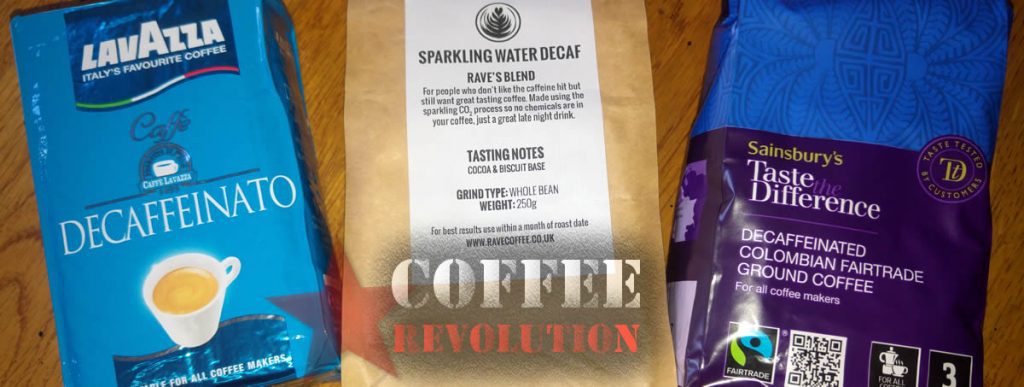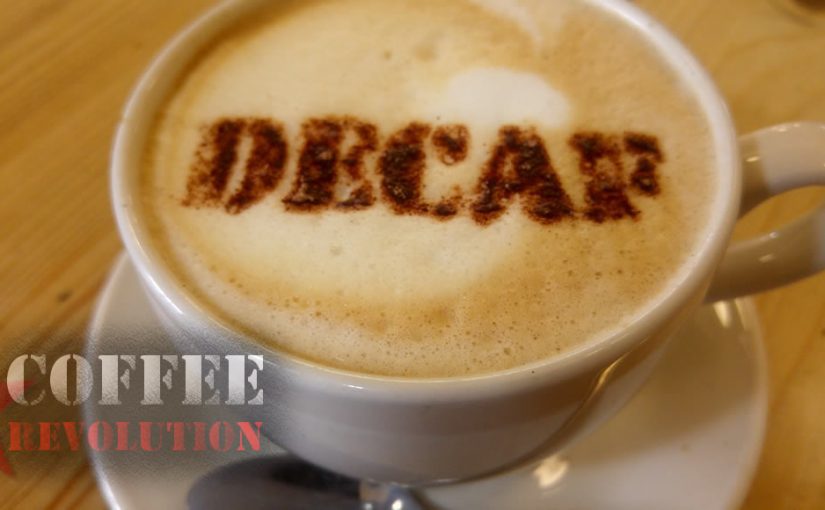The Truth about “Naturally Decaffeinated Coffee”
Many brands of coffee promote their decaf as ‘Naturally Decaffeinated’.
This might conjure up images of obliging coffee plants producing caffeine free beans or coffee producers tempting the caffeine out of the coffee beans with videos of baby pandas sneezing.
How to decaffeinate coffee
The truth has rather more to do with clever industrial processes than with nature.
We can split the decaffeination methods into 2 categories: Organic solvent extraction methods and non-organic solvent methods.
Organic Solvent Extraction Methods
If your pack of coffee doesn’t list a specific decaffeination process, then this is the most likely method. Coffees that are promoted as “naturally decaffeinated” may also fall into this category, especially if no further details are supplied.
If you have seen the word organic and are thinking this involves a farmer loving tending the soil then you are going to be disappointed. This isn’t about how the coffee beans are grown.
The term ‘organic’ in this context is a scientific definition and refers to solvents that are carbon based. They may have been produced from natural ingredients, but due to cost issues, are more likely to have come from petroleum.
Is there caffeine in decaffeinated coffee? There is always a little caffeine left from all of the decaffeination processes, usually upto 3% so not enough to be of concern.

Health implications of decaffeinated coffee
We all know that drinking fertilizer would be bad for our health, but depending on our outlook, we might not mind the fact that our carrots were grown using it as long as there’s none left on the carrots.
This same principle applies to decaffeination using organic solvents, some people find it acceptable, others don’t. But we would encourage you to examine the facts before deciding for yourself.
Dichloromethane and ethyl acetate are the 2 main solvents that are used. Dichloromethane is the more toxic solvent, but strict regulation limits it to between 10 and 2 parts per million residual dichloromethane depending on the country. In practice it is usually less than 1 part per million.
Ethyl acetate is generally less tightly regulated. Manufacturers are required to use Good Manufacturing Practices (GMP) to minimise levels of residue. Italy sets a limit of 15 parts per million residual ethyl acetate.
Ethyl acetate is naturally found in tiny amounts in some fruits and veg. This has been seized on as an excuse to label decaf produced using ethyl acetate as “naturally decaffeinated”.
All the organic solvent extraction methods rely on 2 facts:
1. Like oil and water, the solvents used don’t mix well with water.
2. Caffeine dissolves better in these organic solvents than in water.

Indirect Solvent Method:
- Soak the green beans in hot water for several hours.
- Drain off the water and mix with the solvent. The caffeine (and to a lesser extent some flavor/color) is extracted into the solvent.
- Drain off the layer of solvent. Distill off the solvent and reuse it.
- Repeat until caffeine levels in the water are down to the required level.
- Add the water back to the beans.
- Evaporate off the water and any traces of solvent.
Direct Solvent Method:
Steam the green beans to swell them and open up the pores in the outer membrane.
- Wash beans with hot solvent.
- Drain off the solvent containing the caffeine (and some flavor/color.)
- Distill off the solvent and reuse it.
- Repeat until caffeine levels in the beans are down to the required level.
- Evaporate off any traces of solvent and dry the beans.
Variations on this theme are being developed using fats and oils such as coffee oil (natural oils from coffee) and even sunflower oil as the solvent. These aren’t major players yet but may in time prove to be a useful alternative to dichloromethane and ethyl acetate.
Non-Organic Solvent Decaffeination Methods
Swiss Water Decaffeination Process:
In case you were wondering, it’s called the Swiss water method because it originated in Switzerland, not because the water in Switzerland has magical caffeine removing qualities.
This is the method most frequently used for coffee labeled as Organic.
- Green coffee beans are soaked in hot water.
- This first batch of beans are discarded.
- The Green Coffee Extract is decaffeinated by passing it through an activated carbon filter or an ion exchange resin.
- The decaffeinated Green Coffee Extract is then used as the ‘solvent’ to extract caffeine from another batch of green beans.
- Because the Green Coffee Extract is already saturated with all the other coffee components it will dissolve the caffeine from the beans but won’t remove any more of the other components.
- The Green Coffee Extract is again decaffeinated and recycled.
- Repeat until caffeine levels in the beans are down to the required level.
- The decaffeinated green beans are dried ready for roasting.
Carbon Dioxide Decaffeination Methods:
Carbon dioxide can be used in either liquid form or as a supercritical fluid ( i.e. it can behave as both a gas and a liquid at the same time.) The Sparkling Water Decaffeination Process is a variation that uses water to remove the caffeine from the carbon dioxide.
At the moment, this is a process that needs to be carried out on a large industrial scale to make it commercially viable. The equipment needs to be able to handle pressures around 300 times normal atmospheric pressure.
The good news is that the carbon dioxide method is very selective at remove caffeine without removing color and flavor components. It also doesn’t have issues of solvent residues as no solvents are used.
Caffeine is only poorly soluble in carbon dioxide, so the process can take up to 10 hours.
- Steam / dampen the green beans to swell them and open up the pores in the outer membrane.
- Wash with liquid or supercritical carbon dioxide.
- Remove the caffeine from the carbon dioxide by passing it through activated carbon filters or water. Alternatively, allow the carbon dioxide to return to its gaseous state leaving the solid caffeine behind.
- Repeat the washing process until the desired level of caffeine is reached.
- Dry the decaffeinated green beans.
What About the Taste of Decaffeinated coffee?
No decaf coffee will taste identical to its caffeinated brethren. Pure caffeine has a bitter taste. Removing the caffeine from your coffee will alter the taste profile. It’s like removing one instrument from an orchestra, it won’t be the same but hopefully you can still enjoy the performance.
Just as with an orchestra, the performance doesn’t depend just on the instruments being played but on how they are played. The quality of the green beans and the roasting process has a huge impact on the final flavour.
Take the time to read the pack or check out coffee producers websites. Try different brands that use different decaffeination methods. It’s a good excuse for having another cup of coffee.
Finally, if you were wondering where all that caffeine goes, its at my house watching videos of baby pandas sneezing!
